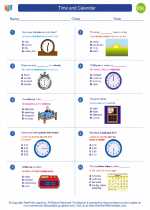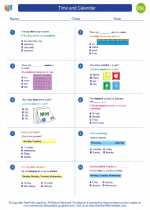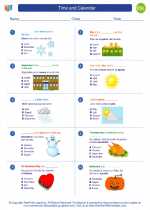Time and Calendar
Understanding time and the calendar is an important part of daily life. It helps us plan our activities, keep track of important events, and understand the passing of days, months, and years. Here’s a study guide to help you learn more about time and the calendar.
Understanding Time
Time is a measurement of the duration of events and the intervals between them. It is typically measured in hours, minutes, and seconds. Understanding how to tell time on both analog and digital clocks is an important skill. Here are some key concepts to understand:
- Hours: There are 24 hours in a day, and they are represented on a clock in two cycles of 12 hours each.
- Minutes and Seconds: Each hour is divided into 60 minutes, and each minute is divided into 60 seconds.
- AM and PM: The 24-hour day is divided into two 12-hour periods: AM (ante meridiem) and PM (post meridiem).
The Calendar
The calendar is a system for organizing and dividing time into days, weeks, months, and years. Here are some key points to understand about the calendar:
- Days of the Week: There are seven days in a week: Monday, Tuesday, Wednesday, Thursday, Friday, Saturday, and Sunday.
- Months of the Year: There are 12 months in a year, and they vary in length from 28 to 31 days.
- Leap Year: A leap year is a year that is evenly divisible by 4, except for end-of-century years, which must be evenly divisible by 400.
- Seasons: The calendar also helps us track the changing seasons, which occur due to the Earth’s tilt and its orbit around the sun.
Review Questions
- How many hours are in a day?
- What are the names of the two 12-hour periods in a day?
- How many minutes are in an hour?
- How many days are in a week?
- What is a leap year?
Now that you have a better understanding of time and the calendar, you can practice telling time, keeping track of dates, and understanding the organization of days, weeks, and months. Time and the calendar are essential tools for managing our daily lives and planning for the future.



